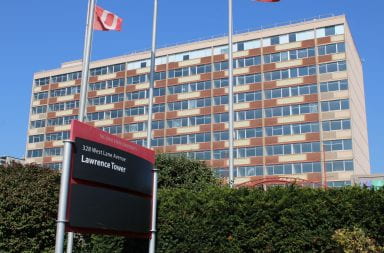Ohio State’s search for life among the stars and work to map the skies may be finished. OSU’s pioneering radio telescope in Delaware, Ohio, known as “Big Ear,” faces certain destruction when OSU’s lease on Ohio Wesleyan University’s land expires Dec. 31.Big Ear will be razed to make way for expansion of the Delaware Country Club. Neither Ohio Wesleyan nor OSU sought to renew the lease.Robert Dixon, assistant director of the telescope project, said, “We feel very badly. It seems tragic that Big Ear is going to be destroyed. I think it speaks volumes about today’s societal value judgments.”Engineer John Kraus, Big Ear’s director, designed and supervised the construction of the telescope in the 1950s. Kraus and a rotating staff of one graduate assistant and 10 undergraduates worked seven years to build Big Ear.”The telescope was designed as an exploration instrument. We accomplished a great deal,” he said.”The design was copied worldwide. There’s a Big Ear in France three times as large as ours, and one in Russia even bigger,” Kraus said.Big Ear consists of two 70 feet long, 100 feet high flat radio signal reflectors that face each other across a 3.5 acre aluminum ground plane.For the first 10 years, Big Ear explored and mapped the skies. It produced the most detailed map of the skies for its time and cataloged more than 20,000 objects.Kraus said that Big Ear broke the distance barrier for telescopes, pushing scientists’ view of the galaxy out to 15 billion light years.Dixon said that astronomers became interested in the possibility of extraterrestrial life in the 1970s.”We were the first observatory on Earth to do this and for 20 years the only one to do this full time.” Dixon and OSU’s engineering program is currently experimenting with a new, computer-based radio telescope design that, if approved, could continue OSU’s astronomy efforts. Named Argus, after Greek mythology’s guardsman who had 100 eyes and could watch all directions at once, Dixon and his colleagues are seeking a $250,000 grant and one acre of land to build a prototype.Both requests are pending, and Dixon said that he has no assurances about getting them.He went on to say that Argus would be a major improvement for research and cost effectiveness.Telescopes like Big Ear scan narrowly and pick up radio events where it focuses. Dixon said that Argus would see the entire sky and not just scan parts of it like existing radio telescopes.Argus could conceivably capture all radio events and not miss the ones that Big Ear would miss because it was looking somewhere else, Dixon said.The vision, Dixon said, is to link all Argus sites worldwide and share data immediately over the Internet.He said current radio telescopes are limited by steel and large component construction costs, which are always rising.”Argus is only limited by computer costs, which are always going down,” Dixon said.Both Kraus and Dixon said that Argus technology could also affect civil aviation.”Argus could also be a general surveillance antennae and supplement airport radar. It would go far beyond anything now in existence,” Kraus said.Dixon said, “Argus can detect anything that flies. It might be possible to build a smaller, computer controlled version for smaller airports that can’t afford larger radar systems.”Dixon said that he has even received a call from the Department of Defense about the new Argus technology.Dixon is seeking land for Argus on campus near the Electroscience Laboratory, off Kinnear Road. He is also considering an invitation by the Methodist Theological School in Delaware to occupy an acre of land next to them. If grants are not approved for Argus, then all on the air observations end when Big Ear is destroyed at the end of the year.


